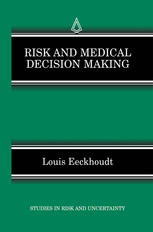

Most ebook files are in PDF format, so you can easily read them using various software such as Foxit Reader or directly on the Google Chrome browser.
Some ebook files are released by publishers in other formats such as .awz, .mobi, .epub, .fb2, etc. You may need to install specific software to read these formats on mobile/PC, such as Calibre.
Please read the tutorial at this link: https://ebookbell.com/faq
We offer FREE conversion to the popular formats you request; however, this may take some time. Therefore, right after payment, please email us, and we will try to provide the service as quickly as possible.
For some exceptional file formats or broken links (if any), please refrain from opening any disputes. Instead, email us first, and we will try to assist within a maximum of 6 hours.
EbookBell Team

4.4
42 reviewsFor people interested in risk management, medical activity represents a stimulating field of study and thought. On the one hand, progress in medical knowledge and technology tends to reduce the risks to survival that individuals would face in the absence of appropriate diagnostic or therapeutic instruments. On the other hand, new medical technologies simultaneously create their own specific risks, sometimes simply because their effects are less well-known than those of established ones. In a sense any medical progress simultaneously generates new risks while destroying old ones. Moreover, unlike many financial risks that can be either divided or transferred to others (e.g. through diversification, insurance or social security) the personal aspects of medical risks are by essence indivisible and non-transferable. As a result, they are in a sense more threatening than financial risks for risk averse patients. These two facts explain and justify the growing interest in risk economics for the fields of medical decision making and health economics.
In Risk and Medical Decision Making, part 1 is developed inside the expected utility (E-U) model and analyses how comorbidity risks affect the well-known "test-treatment" thresholds. Part 2 is devoted to a specific non E-U model with the same purpose: how would one define a threshold in this context and how would one value a diagnostic test? In each of these two parts both diagnostic and therapeutic risks are considered.